CASE STUDY
Snow- and ice-melt system helps State Park welcome guests all winter long
Contractors installed 40,173 feet of 3/4-inch RAUPEX crosslinked polyethylene (PEXa) O2 barrier pipe in 165 loops, serviced by nine custom-made manifolds.
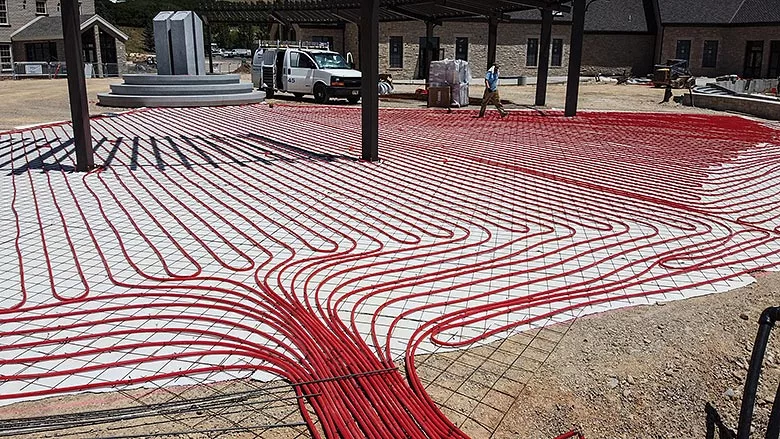
Pipe quality can make or break a snow- and ice-melting (SIM) system. After the piping is laid, it may be exposed to the elements or other construction activity before the concrete pour. The risk of nicks or cuts is a primary concern when the piping is in this vulnerable state. If these damages go unnoticed, it can be costly to repair pipe after the concrete is poured.
Facilities and grounds managers who operate in colder climates know all too well that snow and ice management can be a significant expense and time-consuming challenge. The obvious and direct costs of plow and snow hauling services as well as the chemical and salt requirements are labor and equipment intensive, and are often only the tip of the literal iceberg. Analytical managers are painfully aware of the wide range of less obvious related issues to deal with: Seemingly unavoidable mechanical damage and maintenance costs driven by the ravages of plows, shovels and chemicals; reduced visitor traffic and revenues; indoor damage and increased cleaning demands due to tracked-in salt, moisture and chemicals; and the ever-present threat of injury and liability, to name a few. It all adds up to a big, recurring problem in search of an efficient solution.
According to Kaj Valentiner, project foreman of Valentiner Construction, whose regional reputation led to them being tapped as general contractor (GC) for a new 12,000 square foot welcome center and surrounding plaza in This Is The Place Heritage Park. The CEO of the non-profit foundation that manages the popular Salt Lake City institution had found such a solution for his home driveway — an underground snow and ice melting (SIM) system. He wondered whether an equally effective solution could be applied to the walkway areas around the new Welcome Center he was building — an expanse several times larger.
“He noted that he had had a lot of experience in the park with the significant time and expense that it takes to remove snow and ice, and also had seen firsthand how badly salt can damage concrete, with the unsightliness and the need for continuous repairs,” Valentiner says. “We were about to lay 30,000 square feet of new concrete, so I think we wanted to avoid all that in the future.”
Indeed, This Is The Place Heritage Park — a Utah State Park — is located on the east side of Salt Lake City, at the foot of the Wasatch Range and near the mouth of Emigration Canyon, a location that Valentiner says ensures it gets even more snow and is subjected to higher winds than many surrounding areas. Blowing and drifting snow “really packs up in spots,” compounding the problems for snow removal crews as well as causing frequent mobility problems for pedestrians.
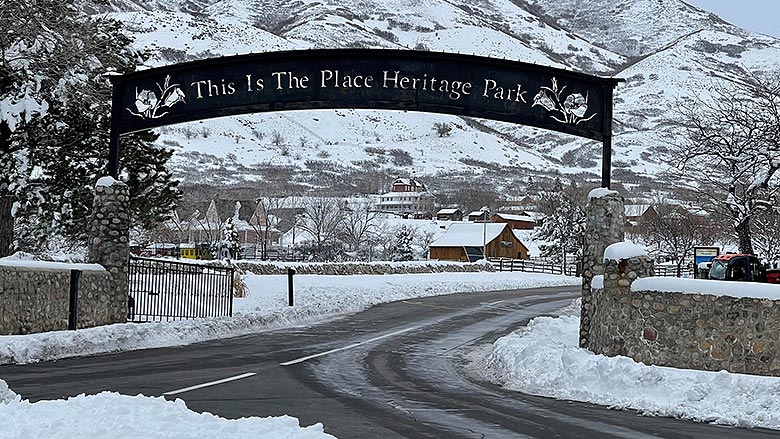
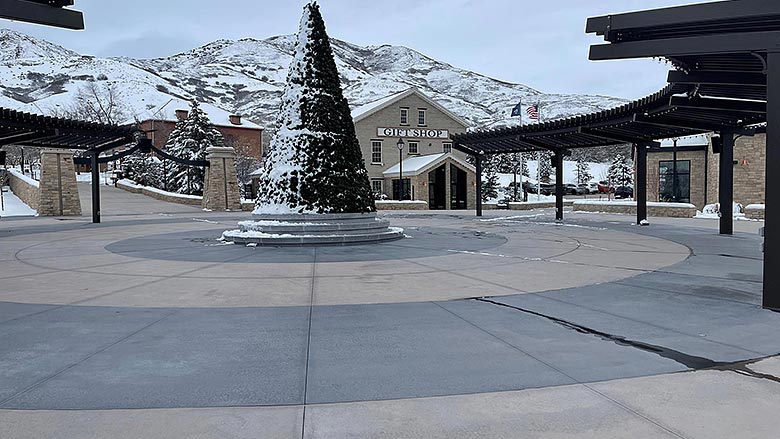
The answer: A hydronic snow and ice melting system
In a hydronic snow and ice melting (SIM) system, a warm water/glycol solution is circulated through a network of pipes embedded within concrete slabs to melt the snow and ice above. With intuitive electronic sensors, the system turns on automatically in response to a specific combination of temperature and moisture, quietly and effectively melting snow on contact as it falls, either evaporating it completely or sending water to adjacent drains. By employing sensors that identify dry ground, and utilizing highly efficient boilers with minimal heating temperatures — only about 36° F (2° C) is required — the systems can minimize run time and power demand making them energy efficient and cost effective.
Thornton Plumbing and Heating, a third generation family business with decades of proven experience in installing SIM systems in everything from driveways such as the Utah Park CEO’s to large ski resorts, was brought into the team with Valentiner on the project. Together, they worked to deliver this functionality to the area near the new Welcome Center, which enabled safe foot traffic and reducing costs and maintenance woes for the operators for the long term.
According to Chris Barker, Thornton vice president, the project would be at the high end of the size scale for SIMs; typical constructions, he says, average around 10,000 square feet, whereas this proposed SIM would encompass a large circular area of nearly 30,000.
To clear this expansive area, the project used 40,173 feet of 3/4 inch RAUPEX crosslinked polyethylene (PEXa) O2 barrier pipe in 165 loops service by nine custom-made manifolds. Three NTI FTG 2000 high-efficiency stainless steel boilers, located in the Welcome Center mechanical room, provide a total of 6 million Btu that travel to the SIM area through 4,000 feet of HDPE distribution piping. Two Tekmar 654 snow melting controls with slab sensors automatically turn the system on and off.
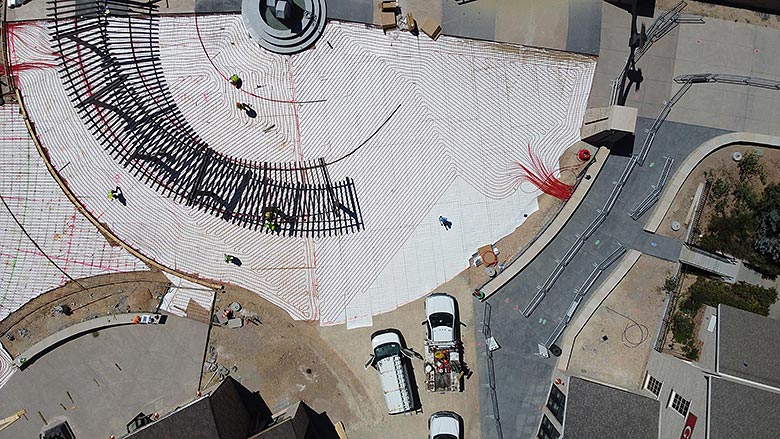
Pipe quality makes the difference
According to Barker and Valentiner, the quality of the pipe used can make or break a project like this in two ways. From the GC’s point of view, the durability of the pipe is key.
“The pipes can be open to the elements and to activity for some time before they are fully installed with the concrete poured over them, so they are very vulnerable and it can be a little nerve-wracking,” Valentiner notes. “Someone drags the pipe over something jagged or throws a shovel and you could have a small nick that later fails under pressure. And if you don’t discover that until after the concrete is poured, it’s very expensive to dig it up to repair it.”
Valentiner, known as a “hands-on” GC, noted that he was personally on-site working side by side with the crews, and says he got a first-hand look at the piping being installed.
“I could see for myself the REHAU pipe Thornton specified was very durable as it was being moved and installed; as it was dragged along mesh and rebar, it was holding up with no cuts or nicks,” he said. “It performed great when we put it up to pressure.”
“That robustness is one reason we always specify REHAU RAUPEXpipe,” Barker explains, who noted that, as an installer, the product provides a number of ease of installation benefits that help keep SIM system projects on track and successful.
“RAUPEX pipe is more pliable and flexible — no matter how hot or how cold it gets, it’s easy to work with,” he adds. “Anyone who works in SIM system pipe can see the difference immediately as compared to other brands. It’s easier to move around, easier to connect to manifolds and fittings and just lets you do the job in a timelier manner.”
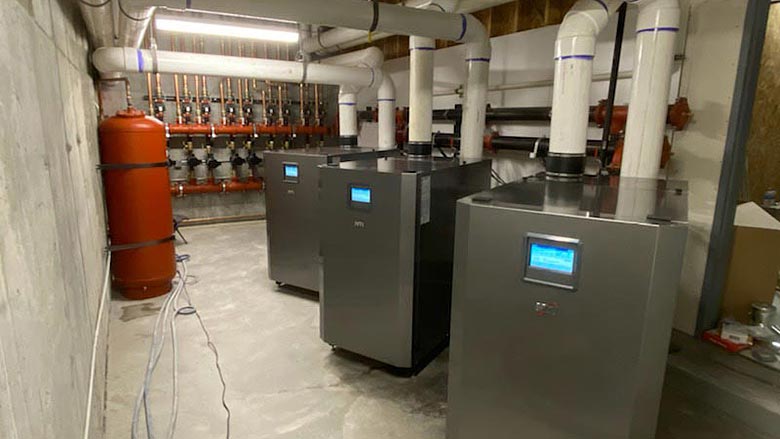
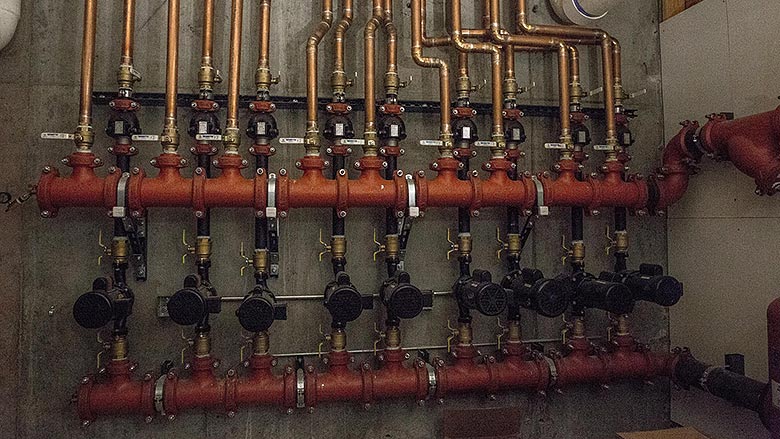
Teamwork leads to success
Taking time in the design and layout, helps to ensure that the SIM system functions correctly and meets expectation. This can be done with LoopCAD or other sophisticated computer design software with expert and experienced hands at the controls. Here, Barker gives high marks to REHAU Manufacturer’s Representative Rocky Mountain Integrated Solutions (RMIS).
“They (RMIS) were vital to optimizing the designs, and provided outstanding support every step of the way,” he said.
The sheer size of the SIM system created a number of logistical challenges that needed to be overcome throughout the construction process. GC Valentiner notes that, for example, the team needed to build makeshift roads in order to get the cement trucks close enough to pump in spots, and coordinating schedules between SIM installers and cement installers is always challenging. He praises Thornton for their cooperation, meticulousness and reliability in keeping things moving seamlessly.
In turn, Barker notes that his REHAU team was instrumental in helping Thornton meet these challenges — especially the proactive handling necessary to keep more than 40,000 feet of pipe from becoming a roadblock on site.
“This construction area had a lot of activity and we didn’t want to have thousands of feet of pipe sitting around getting in the way all the time. So we worked with REHAU to get ongoing deliveries scheduled so we got the right amount of pipe just in time for each stage of the job as it progressed. It arrived just as it needed to go into the ground — every time,” he said. “REHAU is always good and reliable on delivery timing but on this project they met an especially tough logistical challenge and helped make our job smoother and easier. That’s another reason we love REHAU. They work with us as an effective team and are a great partner.”
With the project completed and the first winter under its belt, the client has given Valentiner, Thornton, REHAU and everyone else involved high marks for their efforts.
“The client knew that it would be a challenging and complicated project, but they are very happy with the way it performed and handled the amount of snow as it came in,” Barker noted. “They said it is exceeding their expectations.”
All photos courtesy of Rocky Mountain Integrated Solutions
Looking for a reprint of this article?
From high-res PDFs to custom plaques, order your copy today!






